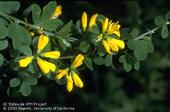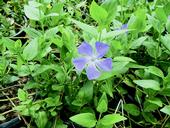- Author: Anne Schellman
- Contributor: Karey Windbiel-Rojas

People in urban and suburban areas often use the term “invasive” to describe plants or weeds that appear to take over a garden or landscape. However, true invasive plants are weeds that infest ecosystems, rangelands, and pasture—places common garden weeds don't thrive.
Invasive plants can reduce native plant and animal diversity, threaten endangered species habitat, and increase wildfire and flood danger. Most invasive plants were introduced as ornamentals from the retail nursery industry, or for the purposes of soil stabilization, animal forage, human food, fiber, or medicinal plants. Some may still be found for sale at retail nursery and garden centers, including the following:
- Author: Christopher Crawford, PlantRight
- Editor: Karey Windbiel-Rojas

[From the April 2015 issue of the UC IPM Retail Newsletter]
Choosing the right plant for the right place is a key element to protecting California's rich natural ecosystems. When used appropriately, plants offer us nourishment, beauty, sanctuary, and habitat; but some plants may have adverse environmental consequences.
Since 2005, PlantRight has worked with a diverse alliance of stakeholders to address the problem of horticultural plants that become invasive in California (Figure 1). Run by non-profit Sustainable Conservation, PlantRight tackles this...


